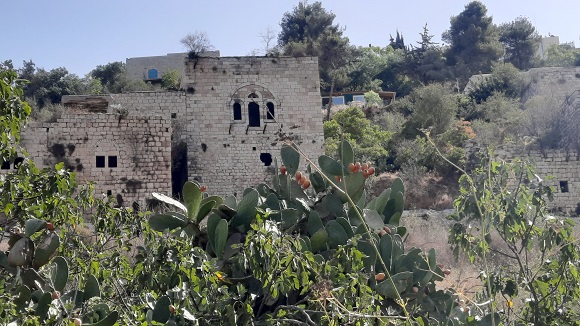I was full of enthusiasm and good intentions as I unpacked the pieces of the pre-fab sukkah I had purchased especially for the holiday. It should be a simple matter of fitting together the metallic poles and the do-it-yourself sukkah would be standing.
A sukkah is a temporary dwelling in which Jews "dwell" - or at least eat their meals - during the week-long festival of Sukkot. The temporary status is reminiscent of the years of wandering that the Children of Israel endured on their way to the Promised Land.
Two hours after beginning to build our sukkah, the sukkah collapsed. Poles, and connecting pieces, plastic and metal, all lying on my patio at my feet.
That was on the eve of the holiday of Sukkot, twenty years ago. What I wrote at the time makes me laugh today but back then, I nearly cried with frustration. Here is what I wrote in 1999, many holidays ago.
Not prepared for the holiday rush
I saw an advertisement for pre-fab sukkot at a reasonable price. The company had a Jerusalem location, so I went there one morning before the holiday. It appeared that many others had the same sukkah-buying plans and I had to park a distance from the shop.
The company was not prepared for the holiday rush. There were more customers than salesmen, and the employed workers were quite inexperienced. Chalk it up to the fact that sukkot are only sold once a year, in the period before the holiday. Even so, the staff should have been trained for their job.
When I finally cornered a young salesman, I told him that I was looking for a 2-meter by 3-meter sukkah. My main concern, I said, was to make sure the 3-meter poles would fit in my car. "No problem," the salesman assured me. But he gave no clues how I would transport the poles.
I asked if the company made deliveries. "We'll come Saturday night, but very late," I was told What time was late? I asked. "We'll call you after midnight and let you know what time." I preferred to skip the all-night vigil and decided to try my luck elsewhere.
Anyone can do it
I saw an advertisement, for a competitor in the pre-fab sukkah business. This company claimed that its sukkah poles were no longer than 1 meter in length and were conveniently packed in carrying cases.
I approached a sales agent who turned out to be someone who ran an auto supply shop. He had never previously dealt with pre-fab sukkot. Even so, he assured me that the sukkah's construction was very simple and anyone could do it. The poles were attractively packaged in heavy-duty carry bags, which would have done a golf caddy proud. I paid for the sukkah. It easily fit it into the trunk of my car.
At home, connecting the black plastic pieces was not as easy as it sounded. There were four bags of different-shaped plastic, pieces quite similar to Lego. I looked for instructions, but there were none. Then I remembered the salesman's words. "It is very simple. Anyone can do it."
Logic dictated that a sukkah should be built from its corners. I took my hammer and began forcing the poles into connecting, angular pieces. Amazingly, the poles fit into place. The construction began to take shape, one frame of plastic after another. I enlisted my family to help, holding up one side as I worked on the other. This should do it, I thought, but the end results appeared lopsided and illogical. I told everyone to let go, and that is when the flimsy construction collapsed.
I want my money back!
"Didn't you follow the instructions?" the auto supply salesman asked me the next day. "What instructions?" I shouted. “I demand a refund!” There was only one problem. My sukkah had been taken out of its packaging and there was no money back guarantee.
The salesman gave me two pages of instructions. ‘Put pole A into black piece B’. If I couldn’t do it myself, the salesman promised me that he would personally come to my house and build the sukkah.
I decided to give the construction one more chance. This time I had instructions. I dutifully followed them, step by step. Within a short time, and without the help of my family, I had a formidable construction standing, one that would surely withstand the week-long holiday without collapsing on the dwellers within.
Of course, a sukkah is more than just the poles which form its sides. There are the sheets which serve as the walls and the
schach which makes up the sukkah's roof. These are minor matters, compared to the struggles of getting the sukkah to stand in the first place.
Sukkot is a joyous holiday, one when families get together for festive meals in the luxury of flimsy constructions that stand for a week on patios, balconies and in backyards. After the frustrations and sweat that went into the building of my family's sukkah, I anxiously looked forward to sitting back and enjoying the fruits of my labor.
Originally published September 26, 1999 on About.com
Related article:
I Built My Sukkah Upside Down!
































